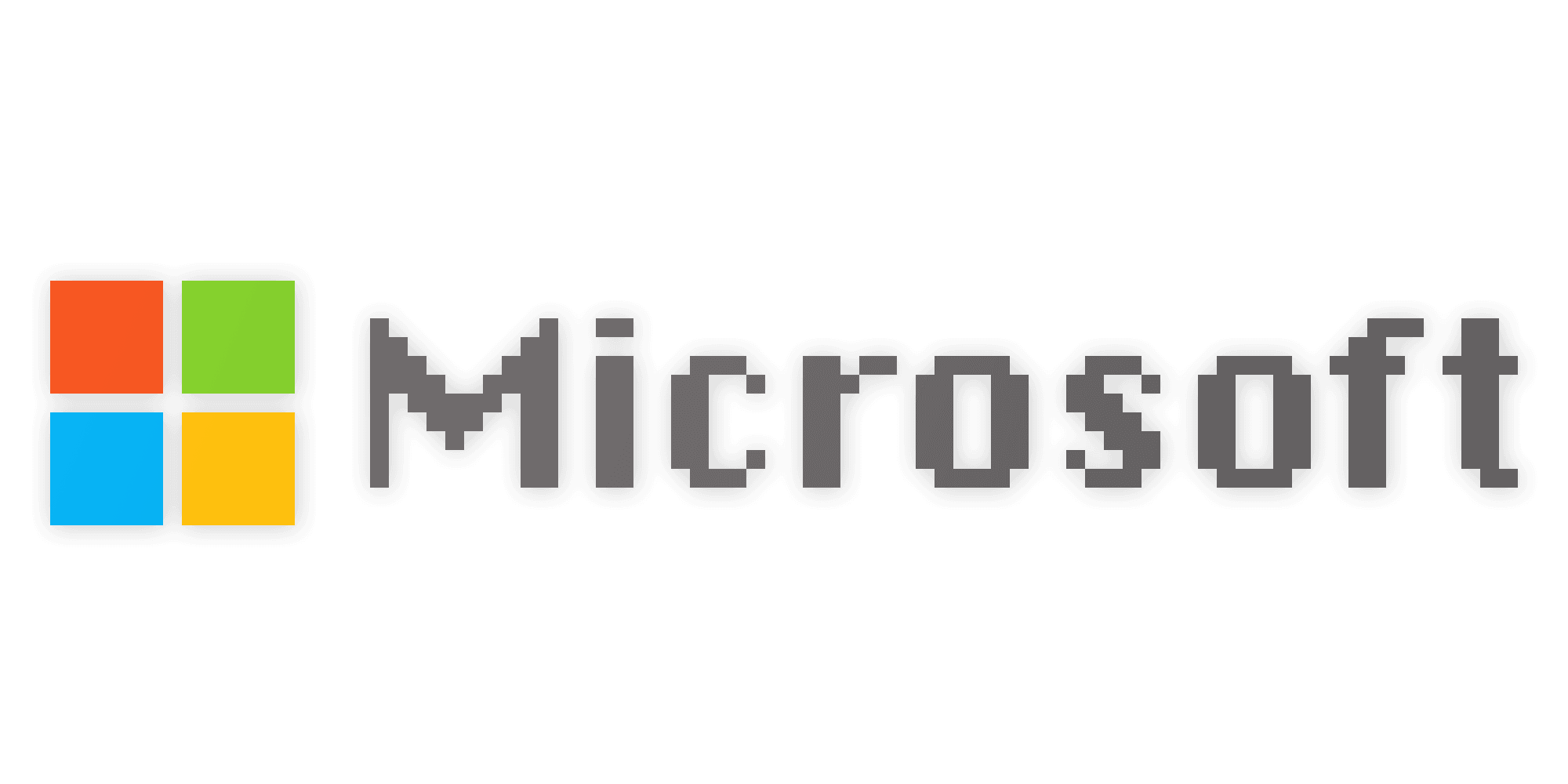The Microsoft layoffs that unfolded between in the last couple of years are a response to shifting market conditions and a clear signal that the company was entering a new era. What started as small, routine cuts quickly evolved into a sweeping transformation that touched nearly every division, from enterprise sales to game development.
Some roles were eliminated quietly. Others made headlines. But together, these moves reveal a deeper story—about changing priorities, economic pressure, AI disruption, and the future Microsoft is building.
In this article, we break down each major round of layoffs year by year, analyze their impact across industries like gaming, and explore what they tell us about where Microsoft is headed next.
Total Number of Microsoft Layoffs: Over 20,000 Jobs Lost So Far
From 2022 through 2025, Microsoft eliminated an estimated 20,000 to 22,000 jobs across the company. This includes cuts in consulting, customer support, engineering, sales, gaming, and even middle management.
Some layoffs, like the 10,000-person cut in January 2023, were massive and public. Others, like the performance-based terminations in early 2025, flew under the radar but still affected thousands.
Not every round had confirmed numbers—especially in 2024 and 2025—so this estimate leans conservative. It’s based on reported figures and reasonable assumptions where exact counts weren’t available (such as studio closures or middle management downsizing).
Still, the scale is clear: over the span of just four years, Microsoft quietly reshaped its workforce—cutting more than 1 in every 10 roles, and sending a message that no team or title was off-limits.
In the following sections, we’ll explore each layoff round in detail:
Microsoft Layoffs in 2022: A Year of Subtle Rebalancing
2022 marked the beginning of Microsoft’s slow pivot in workforce strategy. Unlike the massive tech layoffs that dominated headlines in 2023 and beyond, the cuts in 2022 were more about internal optimization than crisis response.
But even subtle moves can signal big shifts.
July 2022: Strategic “Clean-Up” or First Warning Sign?
In July, Microsoft laid off just over 1,000 employees, which made up less than 1% of its then 180,000-strong workforce. The company framed this as a “summer clean-up”—a phrase that downplays the move but still hints at internal reshuffling after the close of the financial year.
The cuts spanned consulting, partner solutions, and customer-focused roles, with no single division targeted. In other words, this wasn’t a restructuring of a failed department—it was a company-wide trimming.
At the time, Microsoft was in good financial shape.
For the nine months ending March 31, 2022, revenue hit $146.4 billion, a sharp rise from $121.93 billion the year before. Net income surged to $55.9 billion. These weren’t the numbers of a company in trouble.
So why cut staff?
This move likely reflected proactive efficiency tuning, not desperation. Microsoft was sending a message: even in boom times, it wouldn’t tolerate organizational bloat. In fact, it stated it would increase overall headcount in fiscal 2023.
But even then, cracks in the tech sector were beginning to show. Companies like Cisco were freezing hiring. Analysts were warning of a slowdown in enterprise tech spend. Microsoft’s July layoffs, while modest, hinted at a coming shift: big tech wasn’t immune to tightening.
October 2022: A Cautious Adjustment as Storm Clouds Gather
By October, Microsoft returned with another round of cuts—this time nearly 1,000 employees again, but out of a larger global headcount of 221,000. That’s still less than 0.5%—but the context was very different.
Unlike July’s performance-based cleanup, this round was clearly a response to economic uncertainty. Inflation was stubborn. Recession chatter was loud. Microsoft’s stock was down almost 30% for the year, mirroring a 31% drop in the Nasdaq Composite.
The layoffs hit across departments and seniority levels, suggesting a deeper evaluation of long-term cost versus value. While Microsoft repeated its usual line about reviewing business priorities, it added a crucial note—it would continue hiring in “key growth areas.”
That tells us two things:
- The company was rebalancing, not shrinking. It was pulling back in areas it saw as stagnant while doubling down in sectors like cloud, AI, and security.
- Leadership was bracing for volatility. Unlike in July, where optimism dominated, this move was more cautious—signaling internal recognition that stormier weather might be ahead.
The Bigger Picture: What the 2022 Cuts Actually Meant
Looking back, the 2022 layoffs at Microsoft weren’t a reaction to failure. They were an early response to inefficiency and future uncertainty.
By trimming fat early, Microsoft positioned itself better for the heavier layoffs of 2023, when macroeconomic pressure hit harder. It also set the tone for a more performance-driven, efficiency-focused culture—something that became far more apparent in 2025 with its shift to “zero severance” layoffs.
These 2022 cuts, though small, were the canary in the coal mine. They showed that even a giant like Microsoft wouldn’t hesitate to restructure in a strong quarter—or act early before things got worse.

Microsoft Layoffs in 2023: From Trimming to Transformation
While 2022’s layoffs were light and strategic, 2023 was the year Microsoft hit the brakes hard. The cuts this time weren’t about tuning—they were about adapting to an entirely new post-pandemic reality.
Over the course of the year, Microsoft cut more than 11,500 jobs, making 2023 its most aggressive year for workforce reductions since the early 2000s.
Let’s walk through the key events—and what they revealed about Microsoft’s shifting priorities.
January 2023: A Massive 10,000-Employee Cut
Microsoft opened the year by announcing it would lay off 10,000 employees, or 5% of its global workforce. CEO Satya Nadella said the decision was driven by macroeconomic pressures and changing customer priorities.
After years of pandemic-era expansion, demand was cooling—and Microsoft needed to rebalance.
This round of layoffs wasn’t just about people. It also came with a $1.2 billion charge, linked to severance, asset write-downs, and office space consolidation. That signaled something deeper than a temporary reset—it was a long-term strategic shift.
The company didn’t detail every department affected, but it was clear this wasn’t a targeted trim. It was a company-wide recalibration. And it sent a strong signal to Wall Street: Microsoft was preparing for leaner times, even if its core products were still strong.
March 2023: Targeted Cuts in Developer Tools and Cloud
A few months later, Microsoft returned with another wave—689 layoffs across its Seattle-area offices. This round impacted specific teams, including Visual Studio for Mac, Azure Edge + Platform, and Entertainment & Devices.
This showed a sharpening focus. Microsoft was starting to zero in on areas that no longer fit into its growth plans. Visual Studio for Mac, for example, was eventually discontinued, meaning the layoffs weren’t just about saving money—they were part of broader product decisions.
It also underscored a shift in Microsoft’s cloud strategy. Azure was still a priority, but the company was clearly consolidating teams around higher-growth, AI-driven opportunities.
September 2023: Another 276 Jobs Cut
In September, Microsoft laid off 276 more employees, mostly in customer support and sales roles. While small compared to January, this round pointed to a continued effort to slim down lower-performing or less strategic segments of the business.
It also coincided with an ongoing effort across big tech to reduce costs in functions that could be automated or centralized—especially as AI tools like Copilot gained traction.
LinkedIn in 2023: Quiet Restructuring Under the Radar
LinkedIn, Microsoft’s $26 billion professional network, also went through two rounds of layoffs this year. First, in May, it laid off 716 employees. Then, in October, another 668 were let go, with engineering, finance, and recruiting taking the biggest hits.
What stood out here was the reasoning: Microsoft said it was streamlining LinkedIn for greater agility.
In plain terms, that meant trimming bloated structures and pushing for faster execution. It was also likely a reaction to weaker ad spending, which hit LinkedIn’s revenue growth.
2023 in Context: A Reset for the AI Era
More than any year before, 2023 showed that Microsoft was preparing for a fundamental shift in how it operated. The layoffs were deep and widespread—but they weren’t just cost cuts.
They were part of a bigger plan to rebuild the company around AI, cloud, and high-efficiency teams.
By removing layers, consolidating underperforming products, and pushing managers to do more with less, Microsoft laid the groundwork for a leaner, more focused business model. And that mindset only deepened in 2024 and 2025.

Microsoft Layoffs in 2024: Activision Blizzard Hit with Massive Layoffs
Microsoft’s 2024 layoffs in its gaming division marked a pivotal moment in the company’s post-acquisition strategy, following its $68.7 billion purchase of Activision Blizzard in October 2023.
These workforce reductions were not only significant in scale but also indicative of the challenges and strategic realignments within the gaming industry.
January 2024: Post-Acquisition Restructuring
In January 2024, Microsoft announced the layoff of approximately 1,900 employees, accounting for about 8% of its gaming division’s workforce. The majority of these layoffs affected Activision Blizzard employees, with additional impacts on Xbox and ZeniMax teams.
Blizzard Entertainment experienced significant changes, including the departure of President Mike Ybarra and Chief Design Officer Allen Adham.
Additionally, a long-anticipated survival game, known internally as Project Odyssey, was canceled after six years of development. Johanna Faries, formerly the general manager of the Call of Duty franchise, was appointed as Blizzard’s new president, effective February 5, 2024.
The layoffs also led to the closure of certain support teams, such as Activision Blizzard’s internal customer support and the team responsible for bringing Xbox games to physical retail.
May 2024: Studio Closures and Consolidation
In May, Microsoft announced the closure of several game development studios, including Arkane Austin, Tango Gameworks, Alpha Dog Games, and the merger of Roundhouse Studios into ZeniMax Online Studios.
These decisions were part of a broader “reprioritization of titles and resources” strategy, aiming to focus on high-impact titles and streamline operations.
The closures sparked criticism from industry professionals and fans, particularly regarding the shutdown of Tango Gameworks, the developer behind the critically acclaimed game Hi-Fi Rush. Dinga Bakaba, studio head of Arkane Lyon, publicly expressed disappointment over the decision, emphasizing the need to value creative teams within the industry.
September 2024: Additional Layoffs
In September, Microsoft implemented another round of layoffs, affecting approximately 650 employees, primarily in corporate and support functions.
Phil Spencer, CEO of Microsoft Gaming, stated that these cuts were necessary to align the company’s structure post-acquisition and to support sustainable growth. He assured that no game studios would be closed, nor would any projects be canceled as a result of these layoffs.
Regulatory and Industry Reactions
The layoffs drew attention from regulatory bodies, notably the U.S. Federal Trade Commission (FTC), which expressed concerns that Microsoft’s actions contradicted prior commitments made during the acquisition approval process.
The FTC highlighted that Microsoft had previously indicated it would maintain the pre-merger operational structure, raising questions about the company’s post-acquisition strategies.
Additionally, the gaming industry faced broader challenges, including the integration of artificial intelligence (AI) technologies. Reports indicated that generative AI tools were increasingly being used for tasks such as concept art and marketing materials, leading to job displacements among artists and designers.
This trend contributed to the workforce reductions and sparked discussions about the future role of AI in game development.
Microsoft Layoffs in 2025: Performance Over Tenure
In 2025, Microsoft intensified its focus on performance management, leading to substantial workforce reductions. The company implemented a series of layoffs targeting underperforming employees and restructured its organizational hierarchy to prioritize technical roles.
January–February 2025: Immediate Terminations Without Severance
At the beginning of the year, Microsoft terminated approximately 2,000 employees deemed underperforming, without offering severance packages or extended benefits.
Affected employees received immediate termination notices, citing failure to meet minimum performance standards. Access to company systems and benefits, including healthcare, was revoked on the same day.
This approach marked a departure from Microsoft’s previous practices, signaling a more stringent performance evaluation system. The company utilized its internal “ManageRewards” system, where employees are rated on a scale from 0 to 200.
Those receiving an “Impact 80” rating or lower for two consecutive years were particularly vulnerable to termination.
The Industry-Wide Impact of Microsoft’s Layoffs
Microsoft’s multi-year wave of layoffs didn’t happen in isolation. With cuts affecting over 20,000 employees across four years, its decisions sent shockwaves through tech, gaming, enterprise IT, and even AI sectors.
Here’s how each industry felt the impact—and why Microsoft’s moves mattered far beyond Redmond.
Tech Industry: A Bellwether for Caution
When Microsoft starts trimming, others take note. That’s because it’s a barometer for broader gaming market trends and conditions.
In 2022, Microsoft’s “summer clean-up” looked like a one-off. But by early 2023, the 10,000-person layoff confirmed what many feared: the pandemic-era growth cycle was over. Within weeks, companies like Google, Amazon, Meta, and Salesforce followed suit.
By the end of 2023, over 260,000 tech workers had been laid off globally. Microsoft helped trigger that cascade. And while it wasn’t the first to cut jobs, its size and influence amplified the message: hypergrowth was out—profitability was back in.

Gaming: Layoffs in a Booming Market?
Perhaps the most unexpected shock came in 2024, when Microsoft laid off 1,900 gaming employees just months after closing its $68.7B acquisition of Activision Blizzard.
The cuts included major studios like Tango Gameworks, which had just shipped the successful Hi-Fi Rush. Even worse, Blizzard lost key leadership, and a highly anticipated survival game was scrapped mid-development.
This sent mixed signals to the industry.
While game revenues were climbing, Microsoft was showing that scale alone wasn’t sustainable. Consolidation was coming. Smaller studios, live service teams, and internal support divisions became increasingly vulnerable—not just at Microsoft, but across the industry.
By mid-2024, similar restructuring moves hit companies like EA, Ubisoft, and Riot.
The message? Even in a profitable market, efficiency now trumps ambition.
Enterprise IT: Cloud, Sales, and the AI Rebalancing
Microsoft’s layoffs also hit enterprise-focused teams, especially in sales, consulting, and customer support.
This wasn’t about weak performance—it was about AI. As Microsoft invested heavily in Copilot and integrated GPT-4 across Office and Azure, it became clear that manual-heavy roles were being replaced or consolidated.
Sales and service teams in LinkedIn and Azure saw cuts. Microsoft also shut down internal customer support at Activision Blizzard, suggesting that automation and outsourcing were becoming go-to solutions.
This shift sent a clear signal to the enterprise world: AI isn’t just a tool—it’s a workforce reshaper. Vendors, SaaS providers, and IT firms took note.
By late 2024, roles in marketing, content, and support functions across the enterprise ecosystem were increasingly at risk from automation and performance tracking systems like Microsoft’s own “Impact Score.”
A Culture Shift Across the Board
Above all, Microsoft’s layoffs signaled a cultural transformation.
- From growth to accountability
- From expansion to optimization
- From people-heavy to performance-heavy
What began as cautious rebalancing in 2022 evolved into a full-fledged workforce transformation by 2025. And as Microsoft set the tone, other companies adapted fast—sometimes too fast.
The result?
A tech industry that now values fewer, faster, and more measurable contributors, with AI as both the tool and the pressure point.
What’s Next for Microsoft?
After four years of layoffs, restructuring, and aggressive realignment, Microsoft enters the second half of the 2020s with a leaner workforce, sharper focus, and big ambitions. But the company isn’t just responding to the present—it’s shaping the future of tech.
Here’s what’s likely next for Microsoft.
AI Will Continue to Drive Everything
Microsoft has made one thing clear: AI is its North Star.
From billion-dollar partnerships with OpenAI to embedding Copilot across Windows, Office, and Azure, the company is betting big on machine learning—not just as a product layer, but as an internal force for efficiency.
Expect Microsoft to:
- Automate more internal functions, especially in sales, marketing, and support.
- Expand its AI-first product strategy, making generative AI a core layer across Teams, GitHub, and even Xbox.
- Double down on developer tools and Azure services aimed at AI startups and enterprises alike.
But the internal trade-off will continue. Roles that aren’t directly tied to building or scaling AI may become increasingly vulnerable.
A Leaner, Faster Gaming Strategy
Microsoft’s gaming division is now more focused—but also more scrutinized. After laying off thousands, closing studios, and canceling projects, the company has signaled that its future in gaming isn’t about volume—it’s about hits.
Expect:
- Fewer, higher-budget releases, with emphasis on franchises like Call of Duty, Elder Scrolls, and Halo.
- Tighter integration between Xbox Game Pass and Activision Blizzard IP.
- A bigger push into cloud gaming, where Microsoft aims to lead the subscription and streaming race.
And after consolidating so much IP, Microsoft has little room for failure. Every new game will carry more weight—and more pressure.
A New Organizational Structure Emerges
In 2025, Microsoft began restructuring around what insiders called a “Builder Ratio” model—more engineers, fewer managers. That’s not just a numbers game; it’s a cultural pivot.
Going forward:
- Teams will be flatter, with more direct communication and less overhead.
- Performance will be measured relentlessly, with systems like “Impact Score” guiding decisions on promotion—and termination.
- Leadership will prioritize technical execution over hierarchy, mirroring structures at Amazon and other high-efficiency giants.
This shift will attract high-output talent, but it could also test morale and retention in areas where creativity and exploration matter.
A Stronger, but Less Forgiving Microsoft
What emerges from all this is a Microsoft that’s more focused, more agile—and more demanding.
It’s positioned to win in AI, hold ground in cloud, and stay relevant in gaming. But it’s also lost some of the stability and employee trust it once enjoyed. The company’s new performance-driven model rewards results, not tenure.
In short, Microsoft is betting that a lean, AI-powered, execution-obsessed organization is what it needs to thrive in the next decade.
And if it’s right, it will reshape the entire industry.
Data Sources
- The Register, 2022. Microsoft says staff layoffs not linked to recession fears
- ABC News, 2022. Microsoft lays off nearly 1,000 employees
- TechCrunch, 2024. Microsoft lays off another 650 from gaming division
- Polygon, 2024. Microsoft laying off 1,900 Activision Blizzard and Xbox workers
- The Verge, 2024. Microsoft lays off 1,900 Activision Blizzard and Xbox employees
- The Verge, 2024. Microsoft lays off 650 more Xbox employees
- Polygon, 2024. The FTC isn’t too happy with Microsoft’s Activision Blizzard layoffs
- Wired, 2024. AI Is Already Taking Jobs in the Video Game Industry
- Microsoft News Today, 2025. Microsoft institutes “zero severance” layoffs in aggressive performance crackdown for employees in 2025
- Analytics Insight, 2025. Microsoft Enforces Tougher Layoff Rules: No Severance, Immediate Termination
- HR Grapevine, 2025. Possible Microsoft job cuts may target middle management







Comments